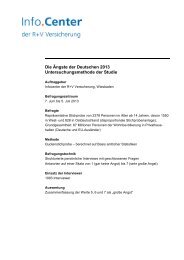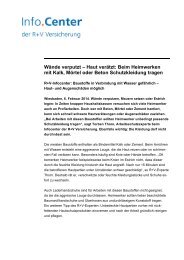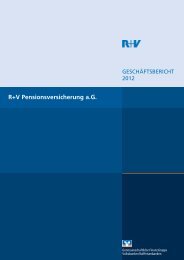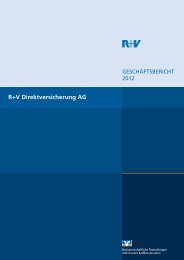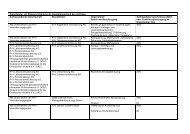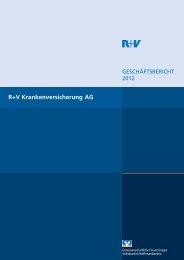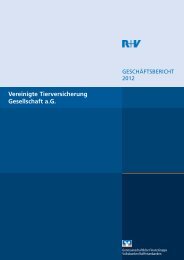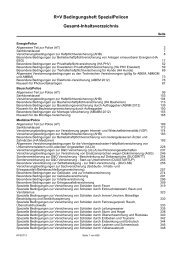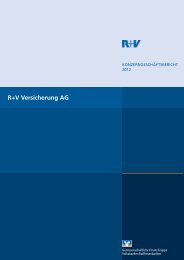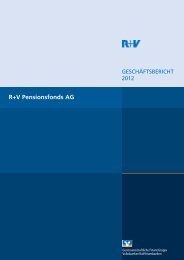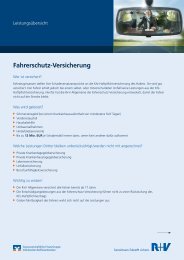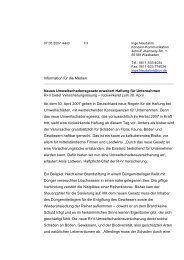R+V Versicherung AG Annual Report
R+V Versicherung AG Annual Report
R+V Versicherung AG Annual Report
Create successful ePaper yourself
Turn your PDF publications into a flip-book with our unique Google optimized e-Paper software.
However, the events of September 11<br />
brought the positive development of this<br />
segment to a sudden halt. The largest<br />
insurance claim of all time did not just result<br />
in technical losses at a number of major<br />
direct insurers and reinsurers, it also<br />
brought the capital markets down with it.<br />
The second half of 2001 suffered further<br />
blows in the form of numerous large industrial<br />
claims such as the explosion of a fertilizer<br />
plant near Toulouse/France and the<br />
explosion at a steelworks in Wales. In contrast,<br />
the number of claims arising from natural<br />
disasters in the year under review was<br />
low.<br />
Central and Eastern Europe<br />
The Central and Eastern European market<br />
is currently undergoing radical reform. The<br />
contraction of the global economy was<br />
scarcely felt in the Central European and<br />
Baltic states, due in particular to the efforts<br />
of those countries hoping to join the EU.<br />
The upward trend of the past year remained<br />
largely constant, driven by strong domestic<br />
demand. Poland was the exception, with<br />
the economy experiencing a considerable<br />
cooling-off on account of the restrictive<br />
rates set by its central bank. This led to<br />
stagnation, in contrast to the high growth<br />
rates of previous years.<br />
9<br />
Most countries in Central and Eastern<br />
Europe benefited from the rapid progress<br />
of the economic reforms and privatization<br />
measures, which have made them less<br />
susceptible to negative effects from abroad.<br />
In addition, the extremely high deficits in<br />
the balance of payments of some of these<br />
countries had little impact as they were still<br />
matched by a high inflow of foreign direct<br />
investors. The level of foreign debt was<br />
correspondingly low, and exchange rates<br />
generally stable.<br />
Russia did surprisingly well once more, with<br />
its growth rate increasing in the course of<br />
the year. The national budget situation<br />
eased and the foreign debt problem also<br />
declined as a result of the extremely high<br />
balance of payment surplus. Investment in<br />
the private sector also surged for the third<br />
year in a row.<br />
The other CIS states also presented<br />
astonishingly good results. After what<br />
was for some a prolonged lean period<br />
with sluggish growth or even slumps in<br />
production, real GDP (gross domestic<br />
product) increased throughout the region.<br />
The reinsurance market developed positively<br />
in the past fiscal year. In 2001, Russian<br />
insurance companies alone collected<br />
approximately 276 billion roubles (€10.4<br />
billion), 62% more in premiums than in the<br />
previous year. The market in general began<br />
to harden, pushing up rates substantially in<br />
certain sub classes, especially for disaster<br />
cover.



